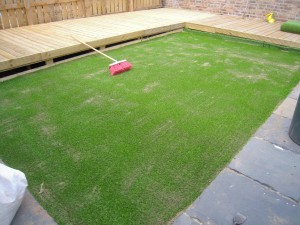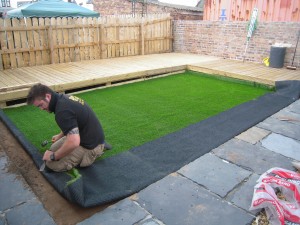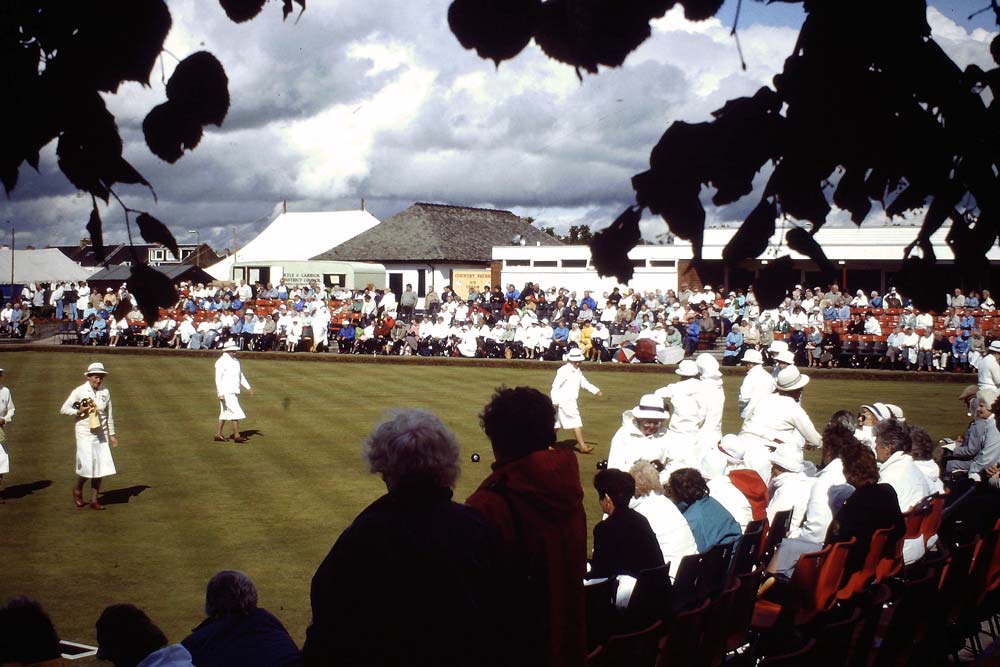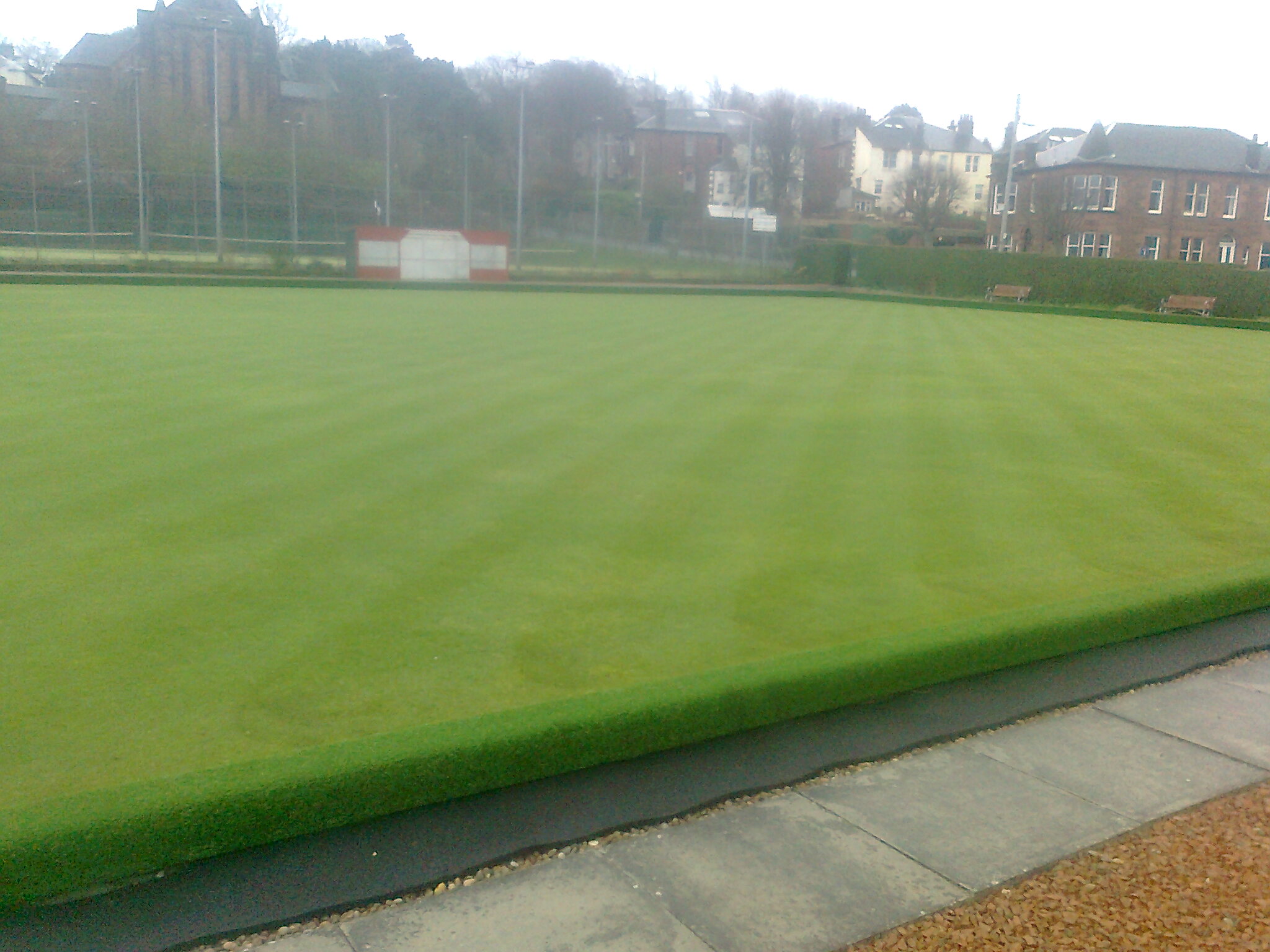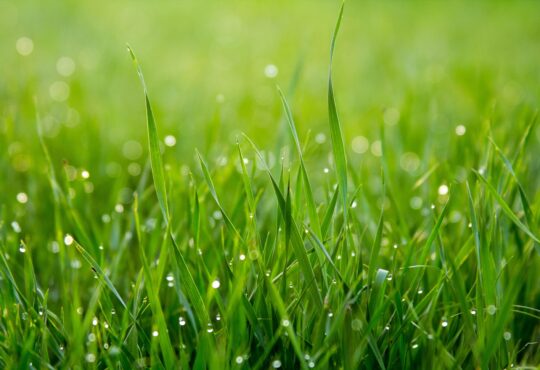Lawns For You Turfing projects
A recent project we at lawnsforyou undertook was for a new build in Dumfries. This was an exceptional undertaking because of the size, 350sq metres, and having to tie in with the paving and decking along two sides.
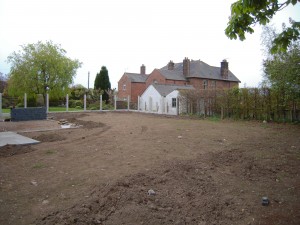
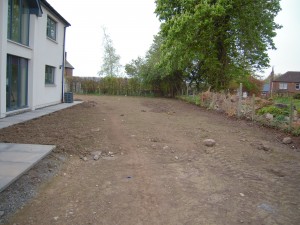
The builders had removed most of the existing soil, so a substantial quantity of new soil was brought in by the owner and roughly levelled and firmed.
We used a mini-digger to get the levels lined up with the decking and paving, then tilled the entire area, before final preparations for turfing.
The most important part of the preparation is to ensure there are no high spots or soft spots remaining before laying the turf, as any problems are much more difficult to repair once the turf is down.
The first step after rotovating was to rake and remove any stones above 20 mil or so in size, followed by treading and then raking again to remove high spots and fill in low spots.
On this lawn we had a few larger undulations left after the initial levelling operation with the digger, so after the first rake and tread, we used the trailed ladder method to level these out. A very efficient land leveller.
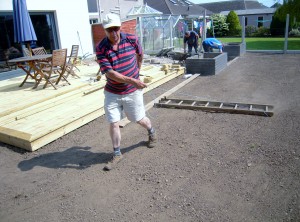
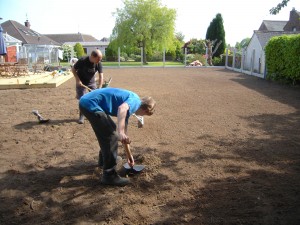
This was then followed by another tread and rake, removing any debris, in final preparation for turfing.
One of the most important things to organise when turfing a new lawn, is arranging the supply of turf that suits the purpose the lawn is to be used for. Most suppliers will have a choice of grass types suitable for everything from a games area to a putting green, with the prices varying substantially as well. Get turf here.
The other important part of ordering turf is to ensure it is delivered when it is needed, as leaving turf stacked in rolls for more than a day or so will badly affect the health of the grass.
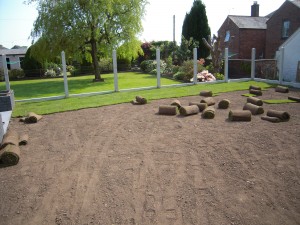
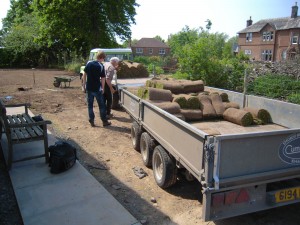
When laying the turf try to pick a starting point that will entail the least amount of trimming to shape, and make sure the first line is straight as this makes the rest of the laying so much more accurate.
When laying the turf it is good practice to stagger the joints, as in a brick wall, which strengthens the structure. At the ends of each line any shorter lengths and shaping to the edges are beast done by cutting the turf with a long bladed serrated edged knife. The long handled half moon is good for edging, example here, but pushes the turf into the soil, creating depressions when turfing.
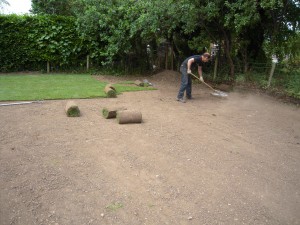
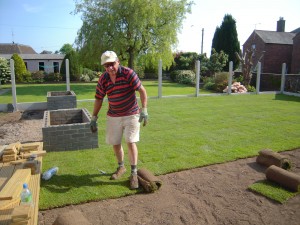
On this job, because of the size and shape of the lawn we divided it into two sections by laying at right angles to the back of the house, then turning ninety degrees to lay at right angles to the side of the house. This made it much easier to shape the turf into the edges of the lawn.
The weather was very hot for the duration of this job so it was important to keep the turf well irrigated until good rooting was established. In this case the soil was good so we had an excellent take, with the turf well rooted within three days or so of laying.
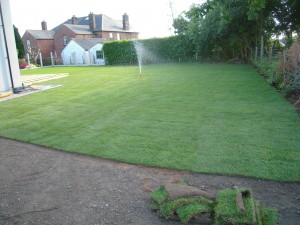
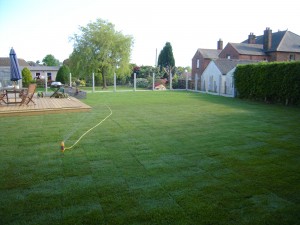
Another project was this one in Irvine, transforming a badly worn and uneven lawn into a lovely family space.
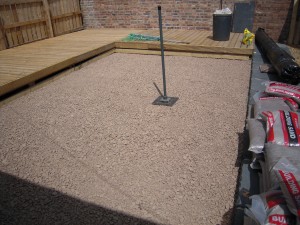
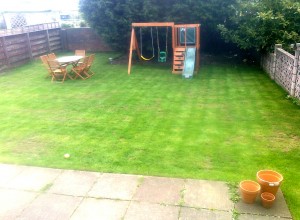
This artificial lawn was another recent project undertaken in Dumfries. It was a small wet back garden unsuitable for a young family, so artificial grass provided a dry, clean alternative.
This lawn was installed in only three hours or so and is great long term value for money.
